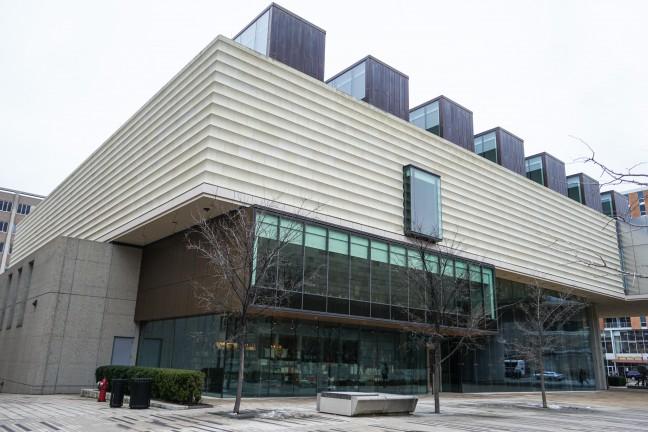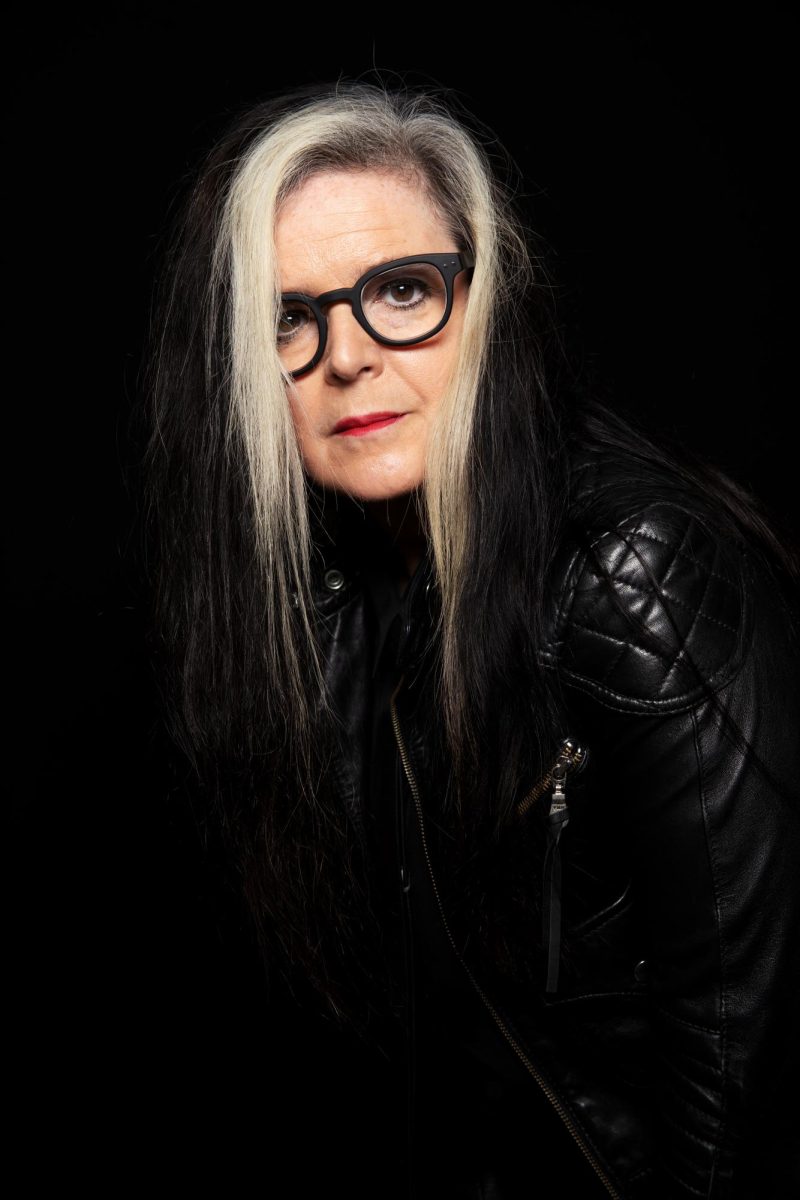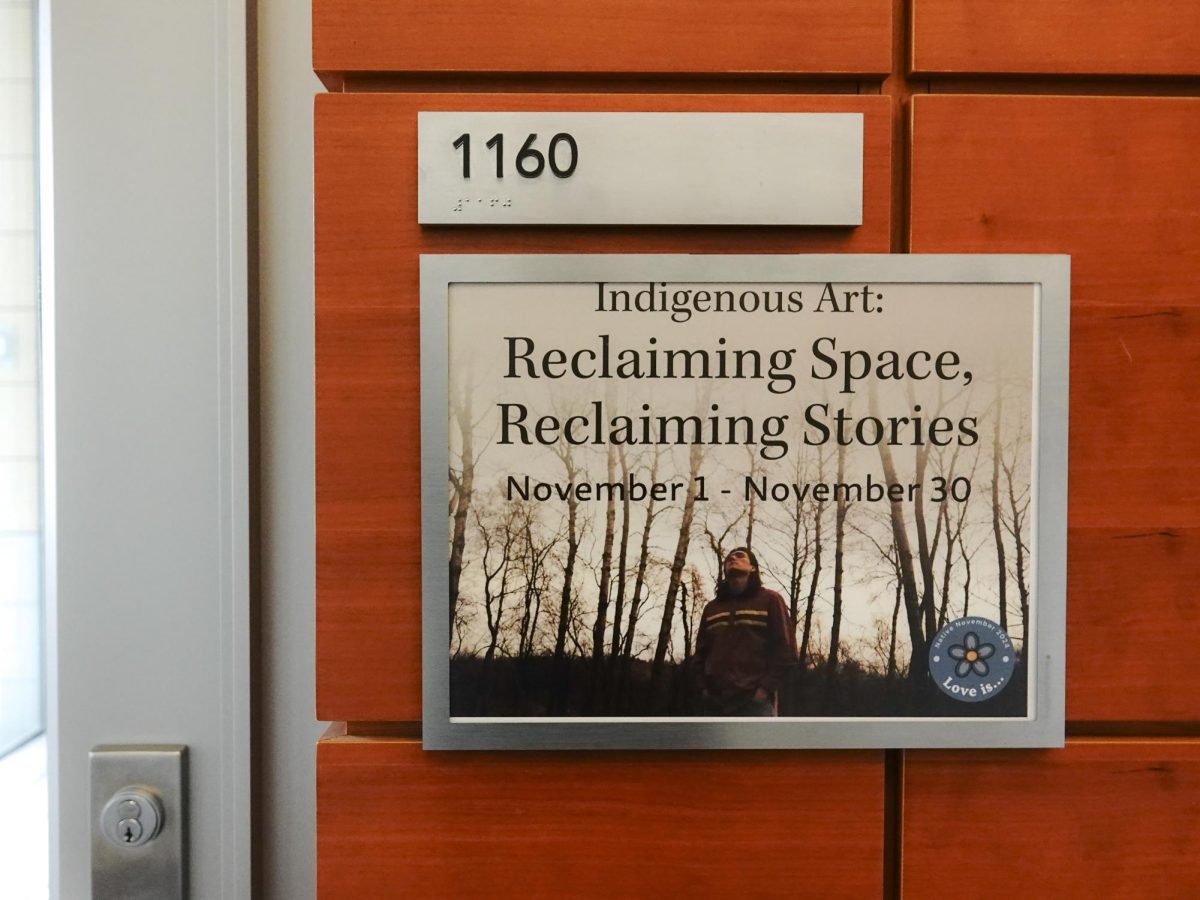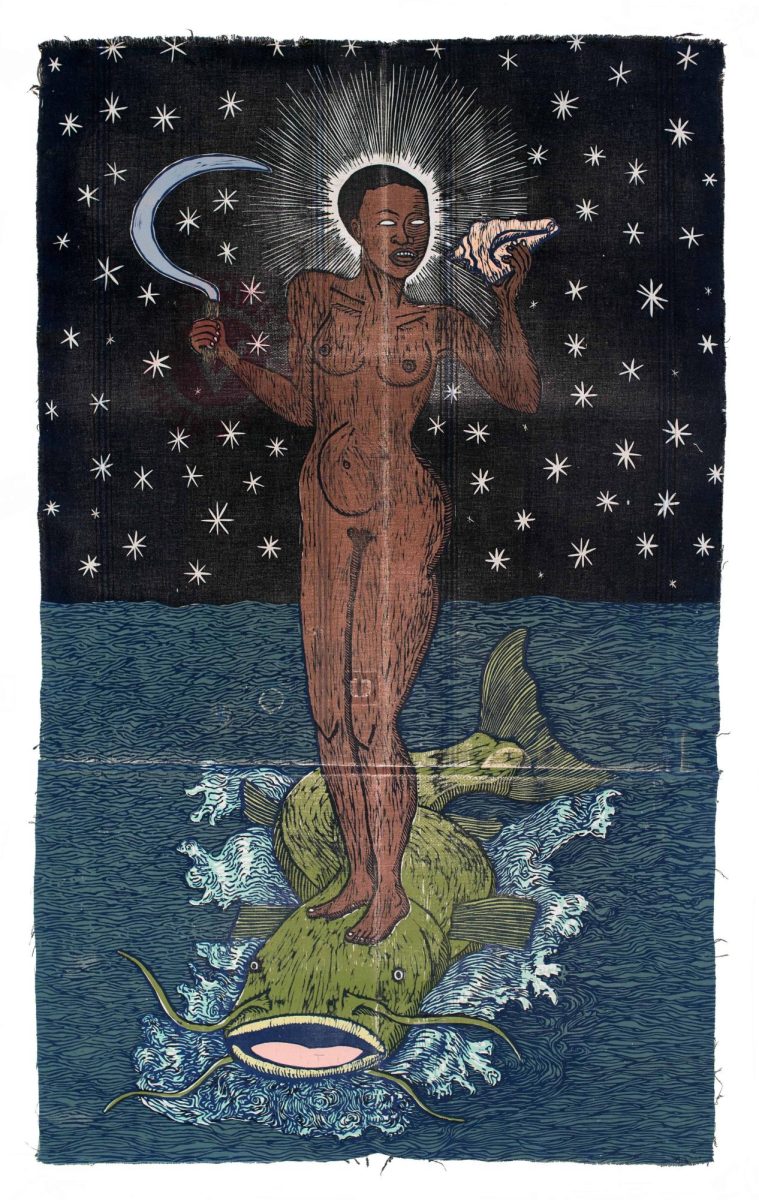The clattering of military tanks crossing a frontier engulfed in war is a haunting picture in itself. When John Hitchcock fuses this with the images of Kiowa tribe animals, a striking message surfaces.
Hitchcock, artist and UW art professor, is featured in the Art Department Faculty Quadrennial Exhibition 2016 at the Chazen. His projects titled “The Protector” and “Tower” are expressions of power and loss that juxtapose images of animals and U.S. military weaponry.
Hitchcock grew up in the Comanche tribal lands in Oklahoma, located near Fort Sill, a U.S. military base. He considers both of those communities to continually influence and contribute to how he forms his art and thinks about his life. It was here where he was first inspired by his Comanche grandmother to create art. She urged him to draw geometric and floral patterns for beadwork designs.
“The memories of helicopters flying overhead, soldiers playing war games in the woods and tanks noisily driving by preparing for battles haunt my imagination,” Hitchcock said.
In the beginning of his career as an artist, Hitchcock developed a connection with a professor named Edgar Heap of Birds, who invited him to showcase his work at the Art Department of University of Oklahoma. This show was only the beginning, as his work began to appear in more exhibitions around the country and the world. Hitchcock said the evolution of social media today makes it much easier to connect with curators, other artists and institutions to share artwork.
Hitchcock decided to pursue his MFA at Texas Tech University after attempting to make it as a musician. In the 1980s and ’90s, Hitchcock played the guitar and drums in experimental metal and noise rock bands. The creative knowledge he gained through music drove his desire to become a professor, and he started teaching at UW in 2001.
Using a combination of screen painting and drawings with acrylic paint markers, acrylic paint and ink pens, Hitchcock created his project, “The Protector.” The circular and linear patterns throughout the work are references to the Native American beadwork he grew familiar with while growing up. He combines images of hybrid animals such as owls, deer and buffalo — which represent the Wichita Mountains in Oklahoma — with military tanks and helicopters.
Family stories, nature and the environment inspire this project. Hitchcock said the imagery used in the artwork is a metaphor for cycles of violence conducted by human behavior.
Utilizing screen printing on wood, Hitchcock’s sculpture, the “Tower,” consists of helicopters named after the Apache people, and are intended to both honor the service of Native Americans as well as present the problems surrounding war and assimilation. Hitchcock sees his sculpture as representing both positive and negative themes within the context of Native American culture.
“I see the work as a mixture of autobiographical references with direct responses on intrusive behavior by humans towards nature and other humans,” Hitchcock said.
In his other work, Hitchcock employs his family stories regarding animals — such as screech owls and coyotes — to explore the history of storytelling and his own life. He said the Kiowa people believe the screech owl is important in their culture because of its perceived ability to predict life events.
Similarly, the coyote is regarded as a messenger. Hitchcock takes the images from these stories and transforms them into pieces of art.
Hitchcock explains that time is a challenge for him when creating art, and balance is the key to maintaining momentum. He attributes the rewarding creative process to the art graduate students, as each assistant possess unique skills and allows him to develop new perspectives.
“I’m fortunate that all of the hats I wear are in the creative process,” Hitchcock said. “Every day I am collaborating and learning something new.”
Hitchcock’s work will be on display at the Chazen Museum of Art until April 17, 2016.














